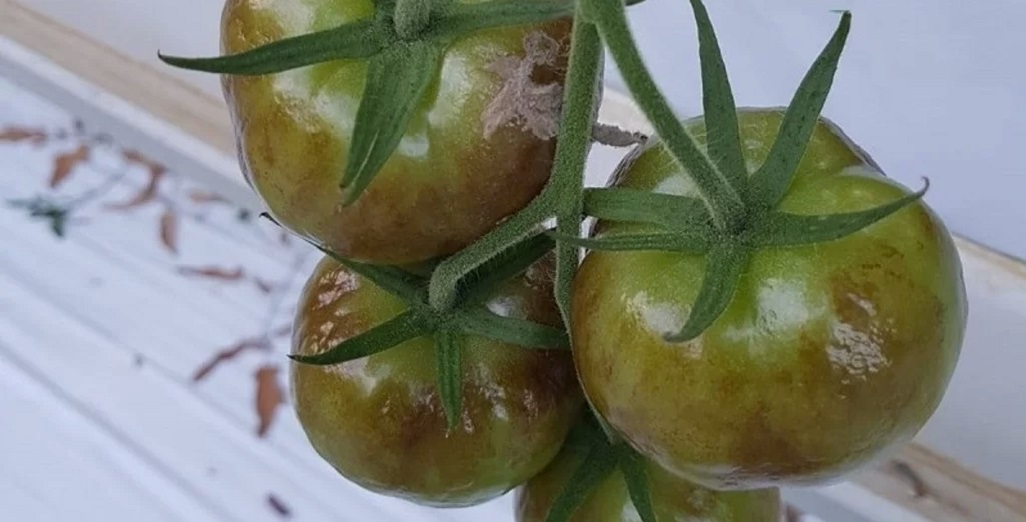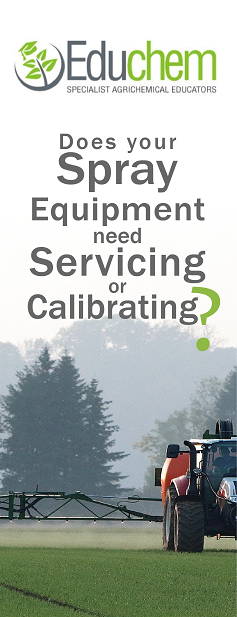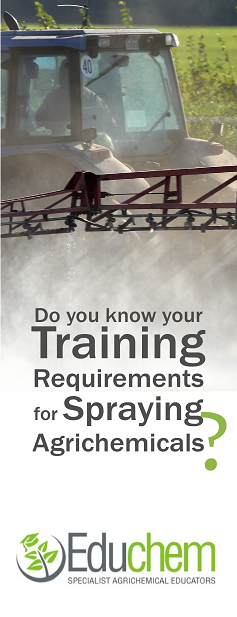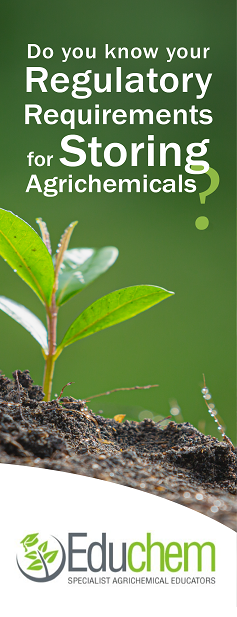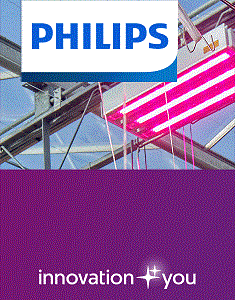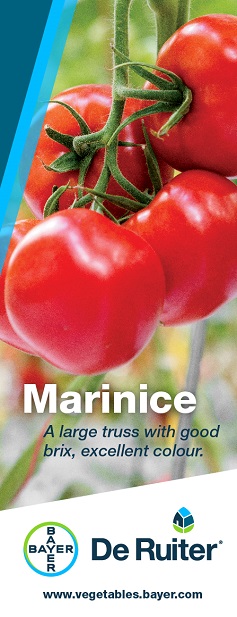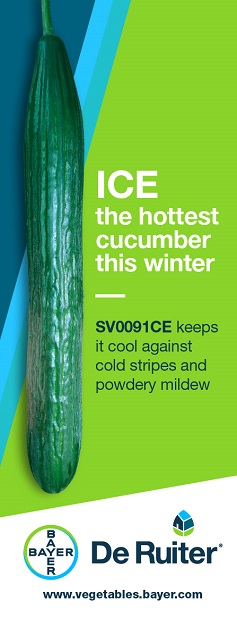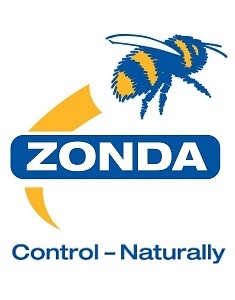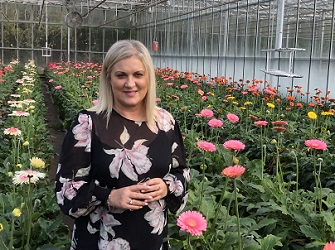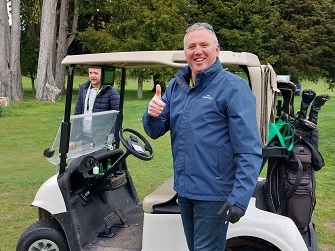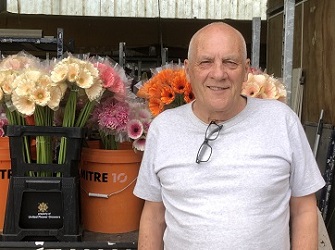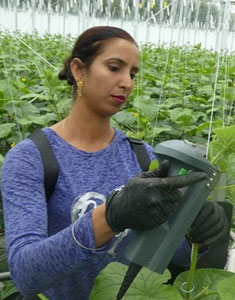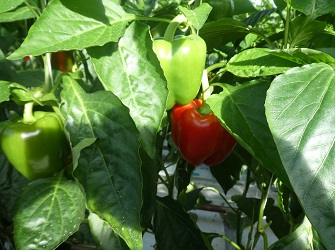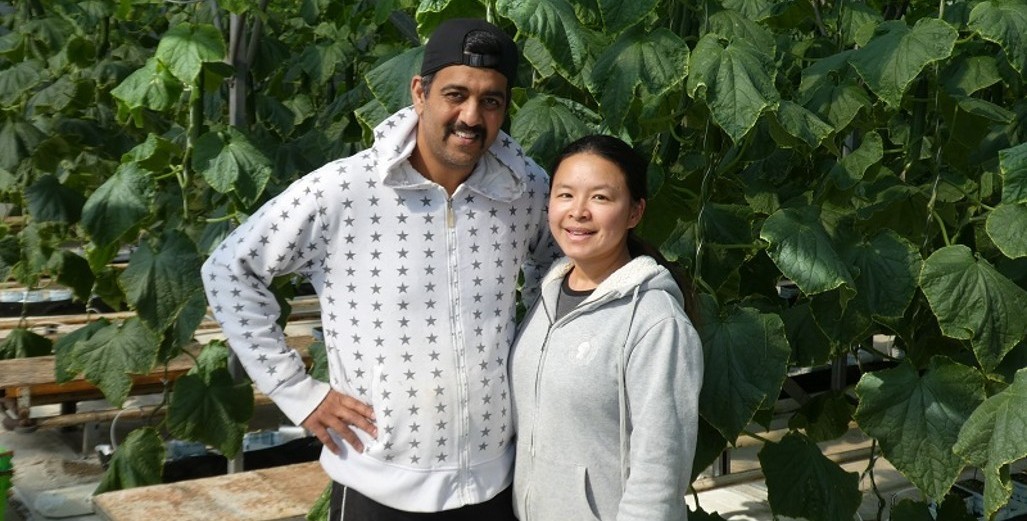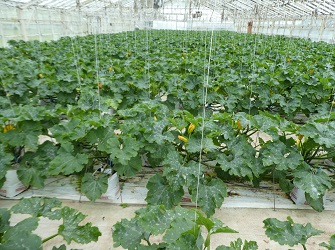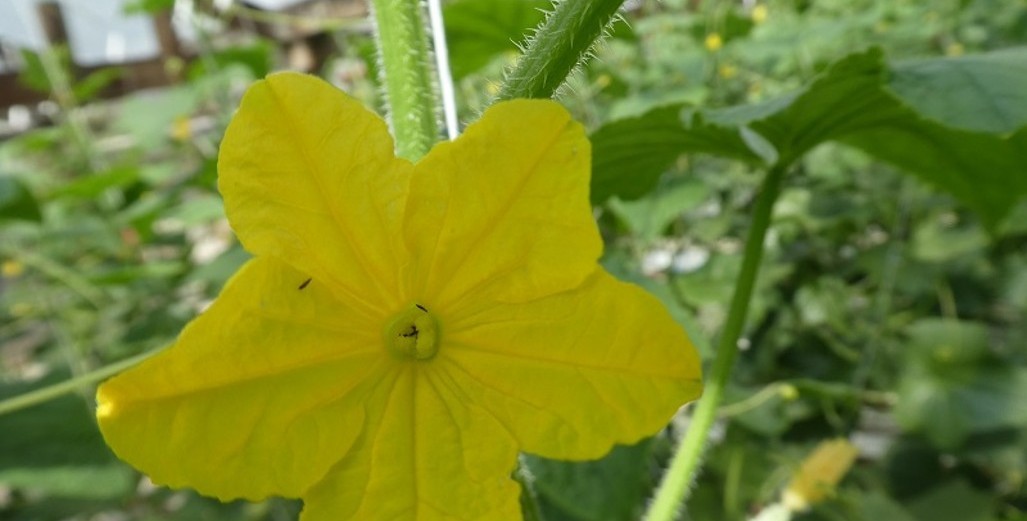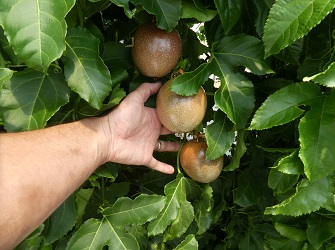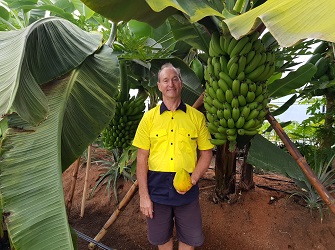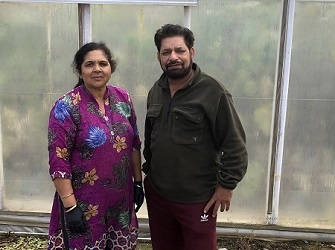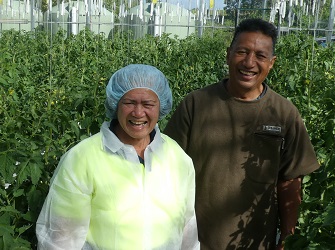Sign up here to subscribe to the Grower2grower Ezine. Every two weeks you will receive new articles, specific to the protected cropping industry, informing you of industry news and events straight to your inbox.
Jul 2024
Tomato grower applies Tobre after contamination

“Stabilization in deteriorated growth of ToBRFV-infected crop”
Virus prevention measures
In North Africa, a tomato grower with 38.5 hectares has also been using Tobre since the beginning of this year. At the end of winter, symptoms of infection surfaced, says the grower who is happy to share his experiences with Tobre, but anonymously. From a commercial point of view, his company doesn’t really want to go public about the contamination.
The grower grows eight different tomato varieties on gutters. The irrigation water is derived from a well. The irrigation water is not disinfected before irrigating the varieties that are not yet ToBRFV-resistant.
Still infected
To keep the virus out, the grower already took several measures: disinfecting the staff’s clothing every day, disinfecting hands with 2% Virkon S. Feet, vinyl gloves, carts, and crates are also constantly disinfected.
However, the grower still got infected. At the end of the winter, symptoms of the virus began to be noticed, especially in the crop. “Almost all fruits had a normal appearance and colour. Less than 0.1% of the fruits showed some abnormal colour spots on the skin during the last weeks of the season.”
Measurements
After the contamination, the grower took various measurements such as fencing off infected areas, reducing movement in the greenhouse, and carrying out tests to detect the virus. Meanwhile, cultivation did continue, including the usual measurements that growers take. “We measure growth, stem diameter, leaf area of a crop, fruit weight etc,” he said.
Thanks to those measurements, the grower, who started using Tobre because of the ToBRFV infection, can now also see the effects of using the biostimulant. “We measured the stem diameter and leaf area of the crop. Three weeks after starting co-dripping and spraying Tobre we saw that the infected crop stabilized. The crop stopped deteriorating and managed to recover.”
Tracking the plant
Besides the effects of using Tobre, which were reflected in the behaviour of the plant, growers also explore a control mechanism: a fluorescent dye. “We add 1.66 milligrams of fluorescent dye per 100 millilitres of water. And then use a UV lamp to see how the crop absorbs Tobre,” he says. Fluorescein absorbs UV radiation and re-emits it as visible green light which makes the plant ‘glow’.”
Dosage
The grower decided to apply the product directly to the infected crops without testing it beforehand. He already knew that some of his colleagues had good experiences with the product. In line with John’s advice, the grower drips and sprays the biostimulant along. “Adding Tobre to the irrigation water does seventy percent of the work. We find that spraying takes care of the other thirty percent,” John stresses.
To read more click on the link https://www.hortidaily.com/article/9643088/stabilization-in-deteriorated-growth-of-tobrfv-infected-crop/
Tobre https://tobre.eu/

CLASSIFIED
Photo
Gallery
Subscribe to our E-Zine
More
From This Category
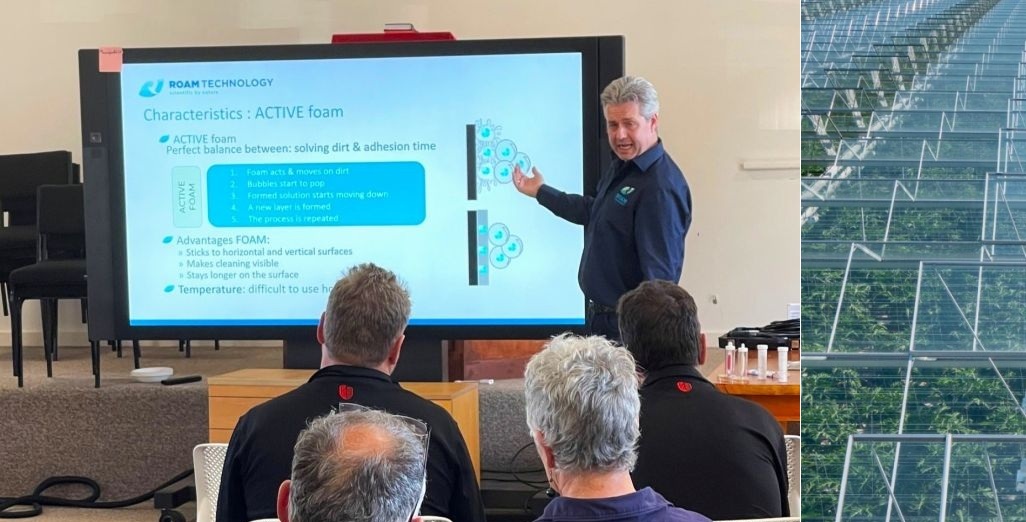
Roam presentation on hygiene protocols for greenhouses and biosecurity, Pukekohe, New Zealand
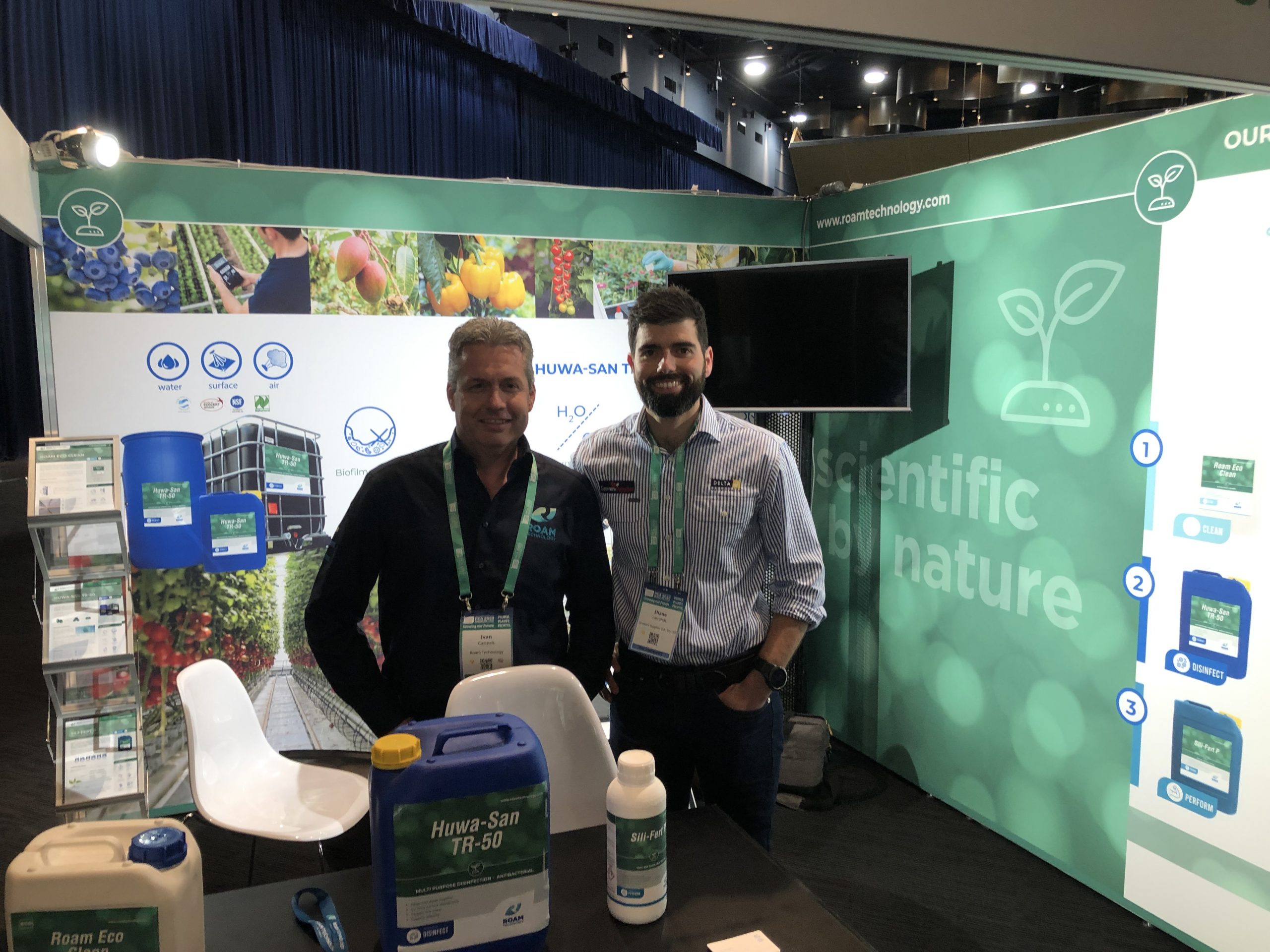
PUKEKOHE WORKSHOP 26th February: Strengthening Biosecurity to Prevent ToBRFV in New Zealand
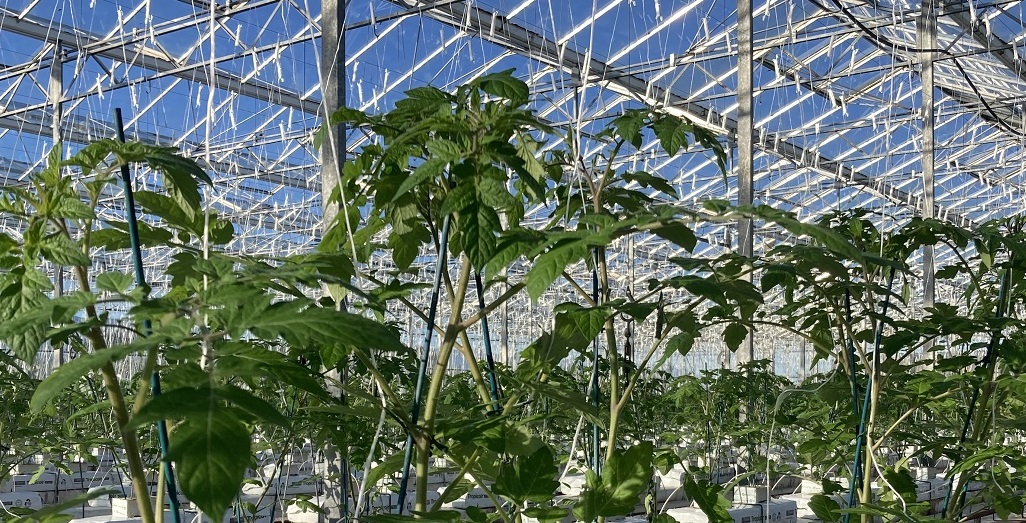
Tomato brown rugose fruit virus detected in Victoria: Concern for vulnerable New Zealand tomato growers
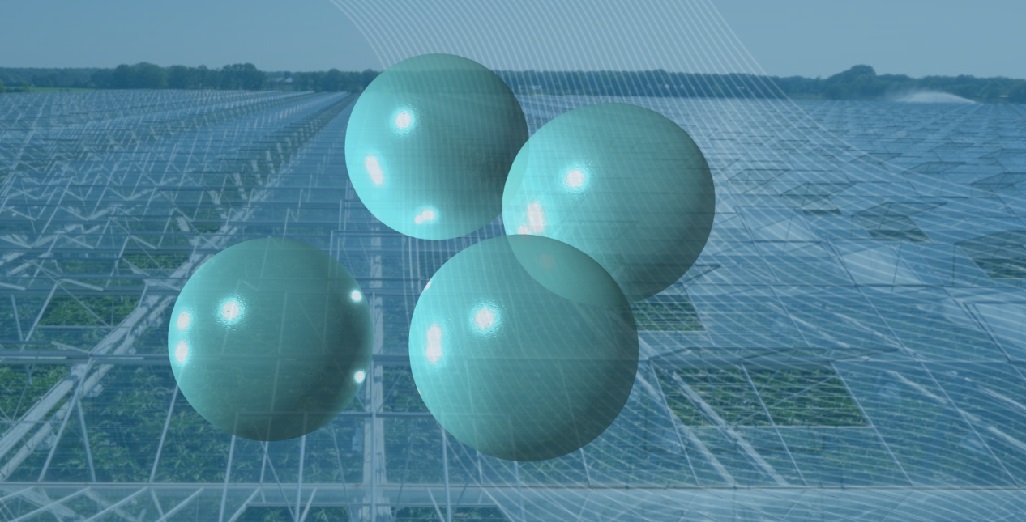
Céline De Neve Joins Agro Solutions Team in APAC Region
Vegetables by Bayer – ToBRFV Knowledge Centre
